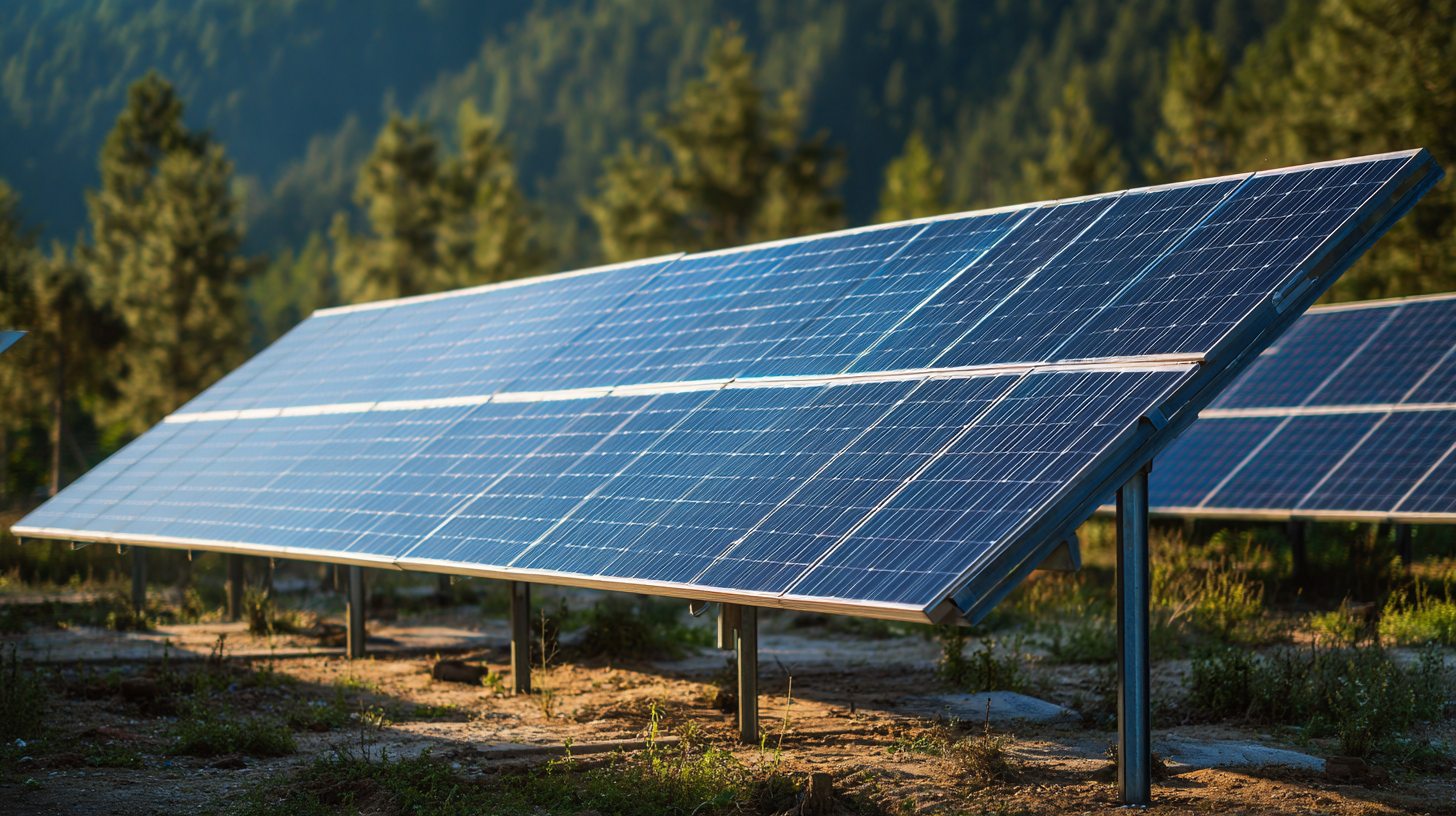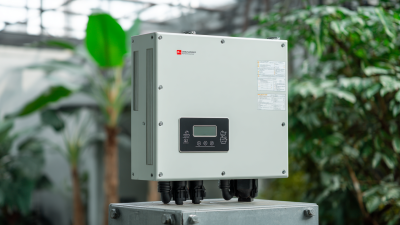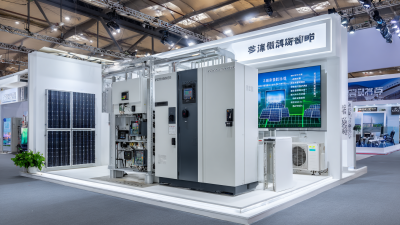
-
Home
-
About Us
-
Products
-
Total Solution
-
News
-
Blog
-
Contact Us
Leave Your Message
-
-
Phone
-
E-mail
-
Whatsapp
-
Whatsapp



In recent years, the adoption of renewable energy sources has surged, with solar power leading the charge due to its environmental and economic benefits. A pivotal component in harnessing solar energy efficiently is the Grid Tie Inverter (GTI), which enables homeowners and businesses to generate electricity from solar panels while interacting seamlessly with the grid. According to the Solar Energy Industries Association (SEIA), the U.S. solar market experienced a cumulative capacity of over 121 gigawatts by the end of 2020, with GTIs playing a crucial role in optimizing energy production and minimizing waste. Furthermore, a report by MarketsandMarkets indicates that the global grid-tied inverter market is projected to grow from USD 4.2 billion in 2021 to USD 8.3 billion by 2026, underscoring the increasing reliance on this technology to support sustainable energy solutions. As we explore the benefits of Grid Tie Inverters, it becomes evident how they facilitate energy independence while contributing to a greener future.

Grid tie inverters (GTIs) play a crucial role in maximizing the efficiency of solar energy systems. By converting the direct current (DC) generated by solar panels into alternating current (AC), which is compatible with the electrical grid, these inverters enable homeowners and businesses to utilize solar energy directly while reducing reliance on traditional energy sources. This seamless integration allows for better energy management, ensuring that excess energy produced during peak sunlight hours can be fed back into the grid, providing economic benefits through net metering.
Moreover, grid tie inverters enhance the sustainability aspect of solar energy solutions by allowing users to harness renewable energy without the need for battery storage systems. This not only minimizes overall costs but also decreases energy wastage. The advanced technology in modern GTIs can optimize energy conversion efficiency, which translates to more usable power and lower carbon footprints. Additionally, many grid tie inverters are equipped with monitoring features, allowing users to track their energy production and consumption in real-time, further maximizing their system's performance while supporting a greener energy ecosystem.
This chart illustrates the efficiency gains from using grid tie inverters with solar energy systems. The data reflects the average percentage of energy saved and utilized based on different inverter technology types over a one-year period.
Grid tie inverters play a crucial role in enhancing energy storage solutions, especially in the context of renewable energy systems. By incorporating advanced technologies such as Maximum Power Point Tracking (MPPT) and battery storage capabilities, these inverters optimize the capture of solar energy while delivering a steady supply to the grid. Recent innovations have highlighted hybrid photovoltaic and fuel cell systems that integrate energy storage, allowing for smart electric vehicle charging. This adaptability promotes a more efficient energy management strategy, greatly benefiting both consumers and utility providers.
Furthermore, the integration of sophisticated multilevel inverters and innovative control schemes is facilitating the development of more reliable grid-connected systems. These systems not only improve efficiency and minimize harmonic distortion but also enhance the overall stability of energy supply. As the energy market increasingly leans towards sustainability, the advancements in grid tie inverter technology significantly contribute to energy independence, supporting a diverse range of applications from residential solar setups to large-scale commercial installations. This evolution ensures that energy storage solutions remain robust and capable of meeting the growing energy demands of the future.

The cost-effectiveness of grid tie inverters (GTIs) plays a pivotal role in the advancement of sustainable energy systems. With the increasing trend towards renewable energy sources, GTIs have emerged as a key component in optimizing energy usage and reducing overall expenditures. Recent studies indicate that integrating solar photovoltaic (PV) systems with GTIs can lower electricity bills by upwards of 40%, capitalizing on real-time energy savings and net metering benefits. As the renewable energy landscape evolves, the emphasis on inexpensive energy solutions has intensified, particularly given the surge in photovoltaic technology advancements aimed at enhancing efficiency and cost-effectiveness.

Market reports indicate the global grid tie inverter market is expected to grow significantly, propelled by the rise in demand for sustainable energy solutions across various sectors. The introduction of smart technologies and AI-driven systems has further boosted the reliability of GTIs, making them more attractive to businesses and consumers alike. Innovative designs that incorporate energy storage systems are now able to manage energy generation and consumption more effectively, ensuring a stable and sustainable energy supply. This evolution not only supports energy independence but also aligns with global efforts to mitigate climate change impacts, enhancing the overall sustainability of our energy systems.
Grid tie inverters play a crucial role in promoting sustainable energy solutions by converting the direct current (DC) generated by renewable energy sources, such as solar panels, into alternating current (AC) that can be used by homes and businesses or fed back into the grid. One of the key features that enhances sustainability is their ability to maximize energy harvest. Advanced grid tie inverters employ algorithms and technology such as maximum power point tracking (MPPT), which optimizes the energy output, ensuring that the system operates at its highest efficiency even under varying environmental conditions.
Another significant aspect of grid tie inverters is their integrated monitoring capabilities. Many modern models include digital interfaces that allow users to track energy production in real-time. This data not only empowers users to make informed decisions regarding their energy consumption but also promotes grid stability by allowing utilities to monitor and manage energy flow more effectively. Additionally, because they allow for the seamless integration of renewable energy into existing electrical grids, grid tie inverters contribute to reducing reliance on fossil fuels, further advancing sustainability efforts.
When selecting the right grid tie inverter, it is essential to consider several key factors to ensure it aligns with your energy needs. First, assess the power rating of the inverter, which should match or exceed the output of your solar panel system. A higher power rating allows for efficient energy conversion and can handle peak production times effectively. Additionally, check the inverter's efficiency rating; look for models with ratings above 95% to minimize energy loss during the conversion process.
Another critical factor is the compatibility of the inverter with your solar panels and local grid requirements. Ensure the inverter supports the voltage and current specifications of your setup. It's also wise to choose inverters that offer advanced features like real-time monitoring and energy management capabilities, which can help optimize performance. Lastly, consider warranty and customer support options from manufacturers, as these will provide peace of mind for long-term investment in your sustainable energy solution.
| Feature | Description | Benefits | Considerations |
|---|---|---|---|
| Efficiency | Converts DC power to AC power with minimal losses. | Maximizes energy production from solar panels. | Higher upfront costs may be a deterrent. |
| Grid Interactivity | Allows for connection to the electric grid. | Enables net metering, earning credits for surplus energy. | Dependent on local regulations and grid requirements. |
| Durability | Designed to withstand various environmental conditions. | Long lifespan reduces replacement and maintenance costs. | Performance may degrade over time; regular checks needed. |
| Smart Technology | Equipped with advanced monitoring and control systems. | Real-time data access helps optimize energy usage. | Requires a stable internet connection for full functionality. |
| Cost Savings | Reduces electricity bills through self-generated power. | Potential savings over time can cover initial investments. | Initial investment can be significant; financing options may be essential. |





